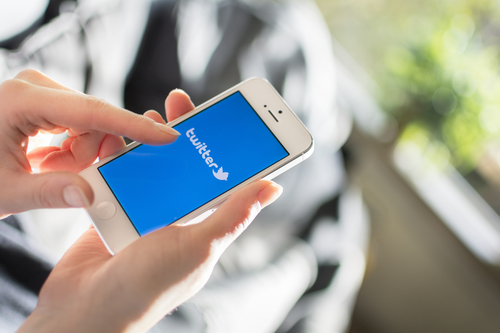This is the second installment in our 3 part series of how to make the most of your social media business pages.
Today we focus on Twitter, for our previous article on Facebook click here.
Twitter's Business Page
Twitter is a great medium for connecting with clients, potential clients and other businesses in your market that provide added value (i.e complementary products or platforms and programs that assist your business).
140 characters is all twitter allows a user to post, which will force you to be creative.
To maximize the potential of each post, use a relevant hashtag, such as #mondaymotivation and #wednesdaywisdom.
These two examples of hashtags are ones that I found to be very very helpful.
Furthermore, posts with pictures tend to generate more engagement.
Try to follow people in your target market as well as competitors to see what they are doing, what works for them and so on.
To help keep track of how your Twitter page is performing there is a great tool called Fanpage Karma, which allows you to track your progress compared to your competition.
This tool can also be used for Facebook and Instagram.
This article will cover the basics of the set-up, different content you can use as well as tips and tricks that will help your Twitter account move in the right direction.
Setup
Let’s start at the top. Here’s how to get your Twitter page started:
1. Download the app or go to Twitter.com on your browser.
2. Select a username.
Your Twitter handle will be the foremost way for people to find your Twitter page. Be sure to get your company name in there. Don’t get cute.
Be straightforward, if your business name is “Michelle's Mani-Pedi”, then your username should be “@MicheManiPedi”.
The reason I did not write the full name is because Twitter limits your username to 15 characters or less. Keep that in mind.
3. Write Your Bio.
With the limited 160 characters permitted for your bio, be sure to use Bitly.com to shorten any links you would like to include in it.
Also, use relevant hashtags so your account comes up when people search for those particular hashtags.
Twitter recommends using a unique link so you can track how many people visit your business site via Twitter.
4. Choose Your Profile Picture.
Similarly to Facebook, your profile picture is a small space that should be focused on your logo above all else.
5. Add Your Header Image.
Also similar to the one on Facebook, this acts as your cover photo.
Twitter recommends you treat this as a billboard, and I tend to agree.
This space should convey the message of what your brand is all about.
Content
Twitter allows for a more direct feel as you can tweet directly to a person or party.
For that reason, simple posts are more effective than they would be on Facebook.
However, be sure to use those hashtags to make the most of every post.
Other types of content that apply directly to Twitter are photos, videos and infographics.
You can also post articles, but be sure to include a photo and use Bitly or other URL shorteners like goo.gl to shorten the link to make sure you have enough space.
Infographics are the best for Twitter as it provides you an extra space in the picture to convey a message.
Here is an example of the infographics we make:

Tips & Tricks
Tip #1: Be Helpful!
Use Twitter as a tool to find out the questions your target audience asks, and answer them so you can establish your authority in your field.
Being helpful is also a great way to get new customers.
Tip #2: Share Compelling Content.
Twitter is the place where you can also share general news. It doesn’t have to be directly related to your audience (it is a plus though), if people see you’re curating interesting content, they will follow.
Tip #3: Engage new followers.
I use a tool called crowdfire that allows me to create a few different messages that are automatically sent to anyone who follows my account.
Tip #4: Reuse Content.
Unlike Facebook, you can reuse old content far more frequently as tweets are far more fleeting.
That means if you posted something awesome, post it again the next day or even the same day.
Most people will not have seen it the first time.
Tip #5: Be Consistent.
Again, you don’t need to be posting all day, but you should post at least once a day. Use Tweetdeck to schedule well in advance.
Tip #6: Give credit.
If you retweet, or use other people's content then tag them using their Twitter handle.
Tip #7: Use #Hashtags!
Hashtags are most crucial on Twitter, possibly more than on any other social network, but don’t over do it! Two hashtags are usually more than enough.
Best Times to Tweet:
Monday - Friday: 12 - 3pm
Wednesday: 5 - 6pm
Weekends: Anytime during the afternoon
(Source: Shortstack)
Like on Facebook, once your page is all set up and filled out, be sure to keep track of how your posts are doing!
When you are tweeting on a regular basis, liking, retweeting and replying to others and following new profiles, it is important to check your numbers and analytics as part of the routine.
Some metrics to pay attention to are the number of followers, impressions, likes, retweets and overall engagement.
For more information on how to make the most of the analytics available on Twitter itself, click here and let the numbers guide you!
Now that you have your account set up and your content ready, start experimenting and tweet your heart out!
Thank you for reading and good luck!
